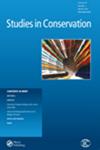逆向工程历史:用激光扫描和3D打印再现奇切斯特平板电脑
IF 0.8
4区 化学
0 ARCHAEOLOGY
引用次数: 0
摘要
三维数字化方法已成为文化遗产实践中必不可少的工具。激光扫描和摄影测量等方法正被广泛应用于保护价值连城的物品,并使观众能够参与历史。这些数据具有价值,因为新一轮多感官博物馆实践浪潮席卷了整个行业,并可能为文化遗产中庞大的3D数据库提供完美的用途。这篇论文记录了这样一个应用,激光扫描与3D打印相结合,向新的观众重新展示了奇切斯特罗马石碑,这是早期罗马-英国历史上的一个重要对象。它详细介绍了数字化平板电脑的过程,并重新创建不同版本的缺失文本及其保存状态。它描述了这些数据如何在文档之外发挥作用。讨论了这些方法如何丰富家庭对文化遗产的参与,以及这些材料如何在高等教育中用作教学材料。本文章由计算机程序翻译,如有差异,请以英文原文为准。
Reverse-Engineering History: Re-presenting the Chichester Tablet Using Laser Scanning and 3D Printing
3D digitization methods have become essential tools in cultural heritage practice. Methods like laser scanning and photogrammetry are being widely applied for the conservation of priceless objects and for enabling audience engagement with history. Such data have value as a new wave of multisensory museum practice ripples through the sector and could provide a perfect use for the enormous corpus of 3D data in cultural heritage. This paper documents such an application, where laser scanning has been used in conjunction with 3D printing to re-present the Chichester Roman tablet, an object of key importance in early Romano-British history, to new audiences. It details the process used to digitize the tablet and recreate di ff erent versions of its missing text and its state of preservation. It describes how such data can play a role beyond just documentation. Discussed is how such approaches enrich families ’ engagement in cultural heritage and how such material can used as didactic material in higher education.
求助全文
通过发布文献求助,成功后即可免费获取论文全文。
去求助
来源期刊

Studies in Conservation
化学-分析化学
CiteScore
1.80
自引率
12.50%
发文量
73
审稿时长
>12 weeks
期刊介绍:
Studies in Conservation is the premier international peer-reviewed journal for the conservation of historic and artistic works. The intended readership includes the conservation professional in the broadest sense of the term: practising conservators of all types of object, conservation, heritage and museum scientists, collection or conservation managers, teachers and students of conservation, and academic researchers in the subject areas of arts, archaeology, the built heritage, materials history, art technological research and material culture.
Studies in Conservation publishes original work on a range of subjects including, but not limited to, examination methods for works of art, new research in the analysis of artistic materials, mechanisms of deterioration, advances in conservation practice, novel methods of treatment, conservation issues in display and storage, preventive conservation, issues of collection care, conservation history and ethics, and the history of materials and technological processes. Scientific content is not necessary, and the editors encourage the submission of practical articles, review papers, position papers on best practice and the philosophy and ethics of collecting and preservation, to help maintain the traditional balance of the journal. Whatever the subject matter, accounts of routine procedures are not accepted, except where these lead to results that are sufficiently novel and/or significant to be of general interest.
 求助内容:
求助内容: 应助结果提醒方式:
应助结果提醒方式:


